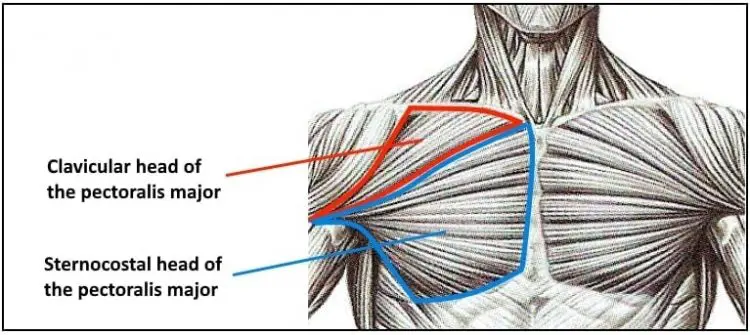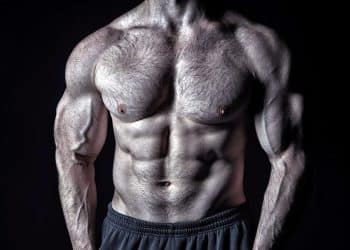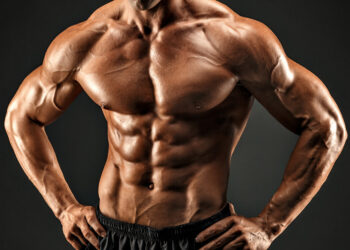Most bodybuilders supplement their bench press workouts with a few sets of cable crossovers. After all, what other chest exercise allows you to check out your gains as you crank out the reps?
However, the cable crossover is just one of a long list of cable machine exercises you can do for your chest. As a personal trainer with over 35 years of experience, I’ve helped numerous clients transform their pecs with nothing more than a cable machine.
In this article, I reveal the 10 best cable exercises you must add to your chest training regimen.
Recent Updates: On June 21, 2024, Fitness Volt’s Senior Editor Vidur Saini (American Council on Exercise-CPT) updated the article and added actionable expert tips throughout the piece to improve the reader experience.
Level Up Your Fitness: Join our 💪 strong community in Fitness Volt Newsletter. Get daily inspiration, expert-backed workouts, nutrition tips, the latest in strength sports, and the support you need to reach your goals. Subscribe for free!
10 Top Cable Machine Exercises for Bigger Pecs
Here are the 10 most essential cable chest exercises you should know about:
- Standing Cable Press
- Seated Cable Press
- Supine Cable Press
- Stability Ball Cable Press
- Single-Arm Cable Press
- High Cable Crossover
- Cable Fly
- Low Cable Crossover
- Stability Ball Cable Fly
- Single-Arm Cable Crossovers And Flyes
1. Standing cable press
| Sets & Reps | Equipment Needed | Target Muscles |
| 3 x 8-12 | Cable machine | Pectoralis major (chest), anterior deltoids (front shoulders), triceps |
Barbells and dumbbells aren’t the only way to do upper-body pressing exercises. You could use a chest press machine, but that locked-in movement pattern may not be ideal for some exercisers.
Using cables means you can customize the exercise to suit your needs, work your pecs hard, and get a free core workout, too.
Adjust the angle of your arms to hit different parts of your chest. Push upward to hit your upper pecs, downward to emphasize your lower pecs, or keep your arms horizontal to work your entire chest.
Pro Tip: Manipulate the tempo of the movement. Try a slower eccentric (lowering) phase for increased time under tension, stimulating more muscle growth.
| Difficulty | Progression | Regression |
| Beginner | Try single-arm variation for added challenge. | Perform the exercise seated. |
Related: Find out how to do this exercise here.
2. Seated cable press
| Sets & Reps | Equipment Needed | Target Muscles |
| 3 x 8-12 | Cable machine, bench | Pectoralis major (chest), anterior deltoids (front shoulders), triceps |
If standing cable presses have a downside, it is that your core could limit the amount of weight you can lift. You may even find your body moving backward more than your hands travel forward! Fix that problem by doing seated cable presses. Like the standing version, you can adjust the angle of your arms to hit your upper, mid, or lower chest.
Saini suggests keeping the scapula retracted and depressed and the chest proud throughout the exercise to maximize target muscle stimulation.
How to do it:
- Place an upright bench in the middle of a cable crossover machine. Sit on the bench with your feet flat on the floor.
- Take a handle in each hand and raise them to shoulder height. Your elbows should be just below your shoulders.
- Press your arms forward and in so they come together in front of your chest.
- Bend your arms and get a stretch in your pecs.
- Continue for the desired number of reps.
Pro Tip: Incorporate 3-5 second isometric holds at the peak of the contraction to further activate the pecs and triceps.
| Difficulty | Progression | Regression |
| Beginner | Progress to standing cable press. | Lower the weight. |
3. Supine cable press
| Sets & Reps | Equipment Needed | Target Muscles |
| 3 x 8-12 | Cable machine, bench | Pectoralis major (chest), anterior deltoids (front shoulders), triceps |
The supine cable press is a cable machine equivalent to dumbbell presses. You can do this exercise on a flat or incline bench press. Pushing your arms forward and together creates an intense mid-rep contraction and should help max out your pump.
Saini recommends supine cable presses as an alternative to bench presses for people with shoulder pain or mobility issues. The cables provide a more natural and comfortable movement pattern for many lifters.
How to do it:
- Place your bench between two cable columns. Sit on the end of your bench and take a handle in each hand. Lie down and pull your hands into your shoulders.
- Press your arms up and together, so they meet above your chest.
- Return to the starting position and repeat.
Pro Tip: Bring your elbows together at the top of your ROM to maximize chest contraction.
| Difficulty | Progression | Regression |
| Beginner | Incline cable press. | Use dumbbells instead of cables. |
4. Stability ball cable press
| Sets & Reps | Equipment Needed | Target Muscles |
| 3 x 8-12 | Cable machine, stability ball | Pectoralis major (chest), anterior deltoids (front shoulders), triceps, core (stabilization) |
Dragging a heavy bench in and out of a cable crossover machine is not always an option, especially in a busy gym. One solution is to use a stability ball. In addition to being more convenient, using a ball means your shoulders can move more naturally, making this variation more joint-friendly.
“Don’t underestimate the core challenge in the stability ball cable press,” says Saini. Engaging your core throughout the movement will enhance stability and work your abs and obliques.
How to do it:
- Place your ball between two cable columns. Sit on the ball and walk your feet forward until the ball is behind your shoulders. Brace your core and legs to stabilize your body. Pull the handles into your shoulders.
- Press your arms up and together, so they meet above your chest.
- Return to the starting position and repeat.
- Lift or lower your hips to change the angle of your body and emphasize your upper, mid, or lower chest.
Pro Tip: Actively drive your heels into the floor to engage your posterior chain and stabilize your body throughout the movement.
| Difficulty | Progression | Regression |
| Intermediate | Standing cable press with heavier weights. | Seated cable press. |
5. Single-arm cable press
| Sets & Reps | Equipment Needed | Target Muscles |
| 3 x 8-12 per arm | Cable machine | Pectoralis major (chest), anterior deltoids (front shoulders), triceps |
Most chest exercises work both sides of your pecs at the same time. That’s no bad thing, but working one side at a time deepens your mind-muscle connection. Also, as you’ll need to work a little harder to keep your torso stationary, single-arm cable presses work your core, too.
Saini adds that the single-arm cable press is a fantastic way to identify and address strength and muscle imbalances. Compared to the bilateral version, it also allows for a greater range of motion.
How to do it:
- Attach a D-shaped handle to an adjustable cable machine set to about shoulder height. Hold the handle and then stand with your back to the machine, so the cable runs under your arm. Adopt a split stance for stability. Brace your core and pull your shoulders down and back.
- Starting with your hand in front of your shoulder, press your arm forward and out. Do not allow your hips or shoulders to rotate.
- Return to the starting position and repeat.
- Do the same number of reps on both sides.
Pro Tip: Experiment with different angles by stepping forward or backward. This alters the line of pull and targets different areas of your chest and shoulders.
| Difficulty | Progression | Regression |
| Intermediate | Perform with a half-kneeling stance for added core engagement. | Seated cable press. |
6. High cable crossover
| Sets & Reps | Equipment Needed | Target Muscles |
| 3 x 8-12 | Cable machine | Upper pectoralis major (upper chest), anterior deltoids (front shoulders) |
No list of cable chest exercises would be complete without mentioning the high cable crossover. After all, this is the most popular chest cable exercise. High cable crossovers work your inner and lower pecs. You can also do this exercise seated.
Saini recommends keeping the elbows slightly bent and shoulders down and back while performing this exercise to isolate the chest muscles better and prevent excessive shoulder strain.
Pro Tip: Lean forward slightly at the bottom of the movement to maximize chest stretch.
| Difficulty | Progression | Regression |
| Beginner | Use slow eccentrics. | Seated cable flyes. |
Related: Learn how to do high cable crossovers here.
Level Up Your Fitness: Join our 💪 strong community in Fitness Volt Newsletter. Get daily inspiration, expert-backed workouts, nutrition tips, the latest in strength sports, and the support you need to reach your goals. Subscribe for free!
7. Cable fly
| Sets & Reps | Equipment Needed | Target Muscles |
| 3 x 8-12 | Cable machine | Pectoralis major (chest) (emphasis on sternal head) |
Where high cable crossovers go from high to low, cable flyes use a more horizontal arm movement. This makes them more like flat dumbbell flyes or the pec deck. As such, they work your entire chest instead of emphasizing your lower pecs.
“Focus on feeling the stretch in your chest as you lower the handles and the contraction as you bring them together,” Saini says.
Pro Tip: Instead of bringing the handles together in a straight line, try to create a slight upward arc. This can emphasize the upper pecs and create a more pronounced ‘chest shelf.’
| Difficulty | Progression | Regression |
| Beginner | Pec deck flyes | Seated variation. |
Related: Find out how to do this exercise here.
8. Low cable crossover
| Sets & Reps | Equipment Needed | Target Muscles |
| 3 x 8-12 | Cable machine | Lower pectoralis major (upper chest) |
Low cable crossovers are the cable equivalent to incline dumbbell flyes. Starting with your arms low and moving them upward, hit your upper and inner chest. This exercise is best done using light to moderate weights and medium to high reps — chase the pump, bro!
Saini suggests experimenting with different foot positions in this exercise. A staggered stance can create a slight trunk rotation, further engaging your core and adding a new dimension to the exercise.
Pro Tip: Engage your glutes and hamstrings at the movement’s top to increase core stability and protect your lower back from excessive strain.
| Difficulty | Progression | Regression |
| Beginner | Try the 3:1:1:0 rep tempo. | Seated cable flyes. |
Related: Learn more about this exercise here.
9. Stability ball cable fly
| Sets & Reps | Equipment Needed | Target Muscles |
| 3 x 8-12 | Cable machine, stability ball | Pectoralis major (chest), core (stabilization) |
Just as you can do cable presses on a stability ball, you can also do cable flyes. This is a good option if regular flyes cause shoulder pain. You can also use the ball to judge and limit your range. Your upper arms will come into contact with the ball, preventing hyperextension of the shoulder joint.
“The stability ball cable fly is a challenging but rewarding exercise. “To maximize core engagement, imagine trying to crush the ball with your lower back as you perform the fly motion,” says Saini.
How to do it:
- Place your ball between two cable columns. Take hold of the handles, sit on the ball and walk your feet forward until the ball is behind your shoulders. Press the handles up and together over your chest. Your arms should be slightly bent but rigid, palms facing inward.
- Open your arms and lower the handles out and down to your sides. Get a good stretch in your chest but do not hyperextend your shoulders.
- Squeeze your arms back up and together, and then repeat.
- Lift or lower your hips to change the angle of your body and emphasize your upper, mid, or lower chest.
Pro Tip: Lift one foot off the ground during the exercise for a greater core challenge. This will force your abs and obliques to work harder to maintain balance.
| Difficulty | Progression | Regression |
| Intermediate | Standing cable flyes. | Perform cable fly on a bench or use dumbbells. |
10. Single-arm cable crossovers and flyes
| Sets & Reps | Equipment Needed | Target Muscles |
| 3 x 8-12 per arm | Cable machine | Pectoralis major (chest), anterior deltoids (front shoulders) |
All standing cable crossover and fly variations can be done using just one arm at a time. Just like single-arm cable presses, working your left and right pecs individually will allow you to create a stronger mind-muscle connection. You’ll also need to work a little harder to keep your torso stationary, providing a secondary core workout.
Saini suggests doing the single-arm cable crossovers and flyes to enhance your chest definition and separation. Use a relatively lighter weight and focus on maximizing the chest stretch and contraction.
Pro Tip: Perform a slight internal shoulder rotation as you bring the handle across your body to activate the serratus anterior, a muscle that contributes to a well-developed chest.
| Difficulty | Progression | Regression |
| Intermediate | Increase weight, sets, or reps. Use a half-kneeling stance for added core engagement. | Decrease weight or perform with both arms. |
Best Cable Workout For Building a Bigger Chest
Here is the most impactful routine for crafting a fuller chest:
| Exercise | Sets | Reps | Rest (seconds) |
| Standing Cable Press | 3 | 8-12 | 60-90 |
| High Cable Crossover | 3 | 8-12 | 60-90 |
| Cable Fly | 3 | 8-12 | 60-90 |
| Single-Arm Cable Press | 3 | 8-12/arm | 60-90 |
| Low Cable Crossover | 3 | 8-12/side | 60-90 |
Why Use Cables at All?
Bodybuilders mostly agree that the best way to build muscle mass and strength is to focus on compound, free-weight exercises. For the chest, that means barbell and dumbbell bench presses – flat, incline, and decline.
However, while these exercises are undoubtedly effective, they can lose some of their potency if that’s all you ever do. Also, compound chest exercises involve your triceps, and it’s not uncommon for those arm muscles to fail before your pecs.
Cables put your muscles under constant tension. This makes them very effective for triggering hypertrophy. In addition, you can adjust your body position and the angle of your arms to target specific areas of your chest, which can be helpful for sculpting picture-perfect pecs.
Using cables, it’s also possible to isolate your chest. Your anterior deltoids and other muscles are still involved but to a much lesser degree. With cables, you can really focus on your pecs, one side at a time if you wish, and that’s a great way to work your chest even harder.
So, if you are serious about building the best possible chest, combine free weights with cable exercises for even better results.
That’s why you need to add cable exercises to your chest workouts!
Chest Anatomy 101
While you don’t need a degree in functional anatomy to build a bigger chest with cables, knowing a little about how your pecs and their associated muscles work may help you choose the best exercises for your goals.

Known as the pecs for short, the pectoralis major is a large, thick, fan-shaped muscle located on the upper part of your chest. Its name comes from the word pectus, which is the Latin word for breast.
This muscle makes up the bulk of your chest mass. The underlying muscle, pectoralis minor, is much thinner and doesn’t contribute much to your chest size.
The pectoralis major is a convergent muscle with three broad attachment sites that come together at a single insertion point.
It can be divided into two sections or heads – the clavicular or upper head and the sternal or lower head (1). The sternocostal head is also known as the abdominal head.
The functions of the pectoralis major are…
The Clavicular head:
- Shoulder flexion
- Horizontal adduction
- Internal rotation
The Sternocostal head:
- Shoulder extension
- Horizontal adduction
- Internal rotation
The clavicular head of the pectoralis major, often just called the upper pecs, is more active during incline chest exercises. Conversely, the sternocostal head, or lower pecs, is more active during decline movements (2). Because of this, you must train your pecs from multiple angles to develop them fully.
Wrapping Up
Barbell and dumbbell bench presses are the undisputed kings of pec-building exercises. For some lifters, they are the only movements needed to build a big, powerful chest. However, for others, they’re a sledgehammer when, what’s really needed, is a sculptor’s chisel!
Cable exercises allow you to attack your pecs with laser-like precision, and small changes in arm or body angle mean you can hit your pecs with almost unlimited variations.
Don’t think for a minute we’re saying that you should drop heavy bench presses from your workouts. That would be sacrilegious! But, if you want to build quality chest mass, you’ll undoubtedly appreciate how these cable exercises affect your pecs.
References:
1. Encyclopedia Britannica: Pectoralis muscle https://www.britannica.com/science/pectoralis-muscle
2. PubMed:An electromyography analysis of 3 muscles surrounding the shoulder joint during the performance of a chest press exercise at several angles https://www.ncbi.nlm.nih.gov/pubmed/20512064
Interested in measuring your progress? Check out our strength standards for Bench Press, Incline Dumbbell Fly, Cable Fly, and more.








